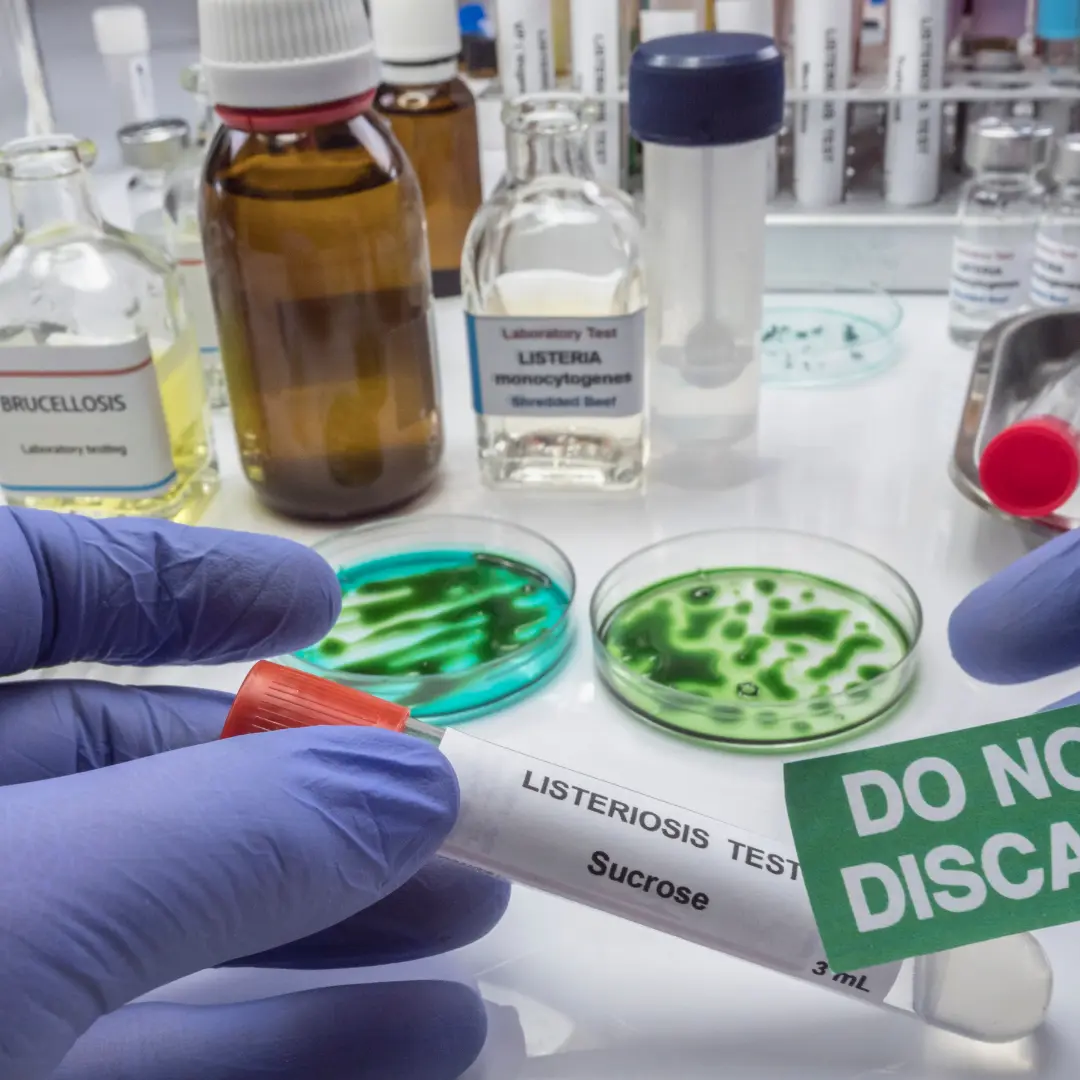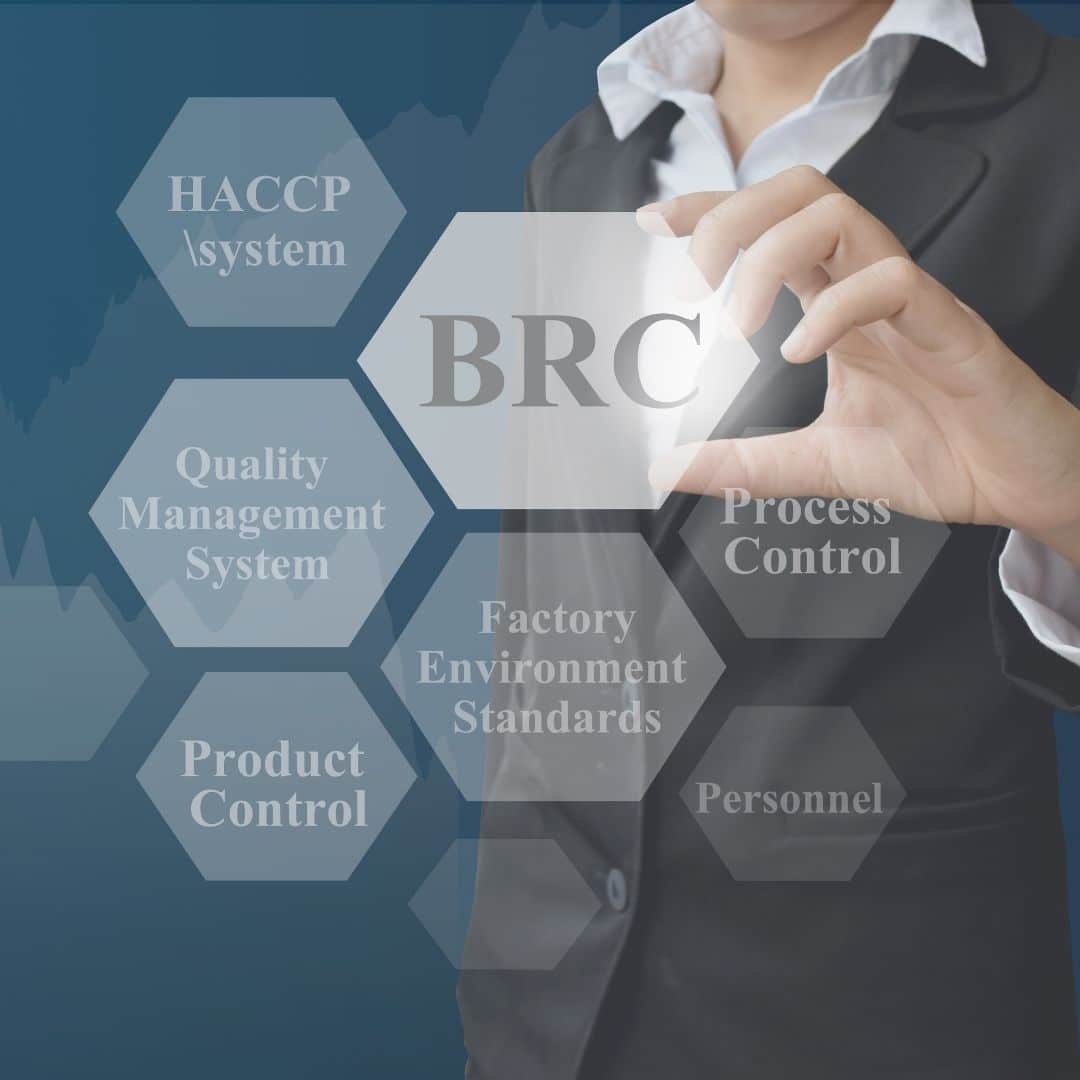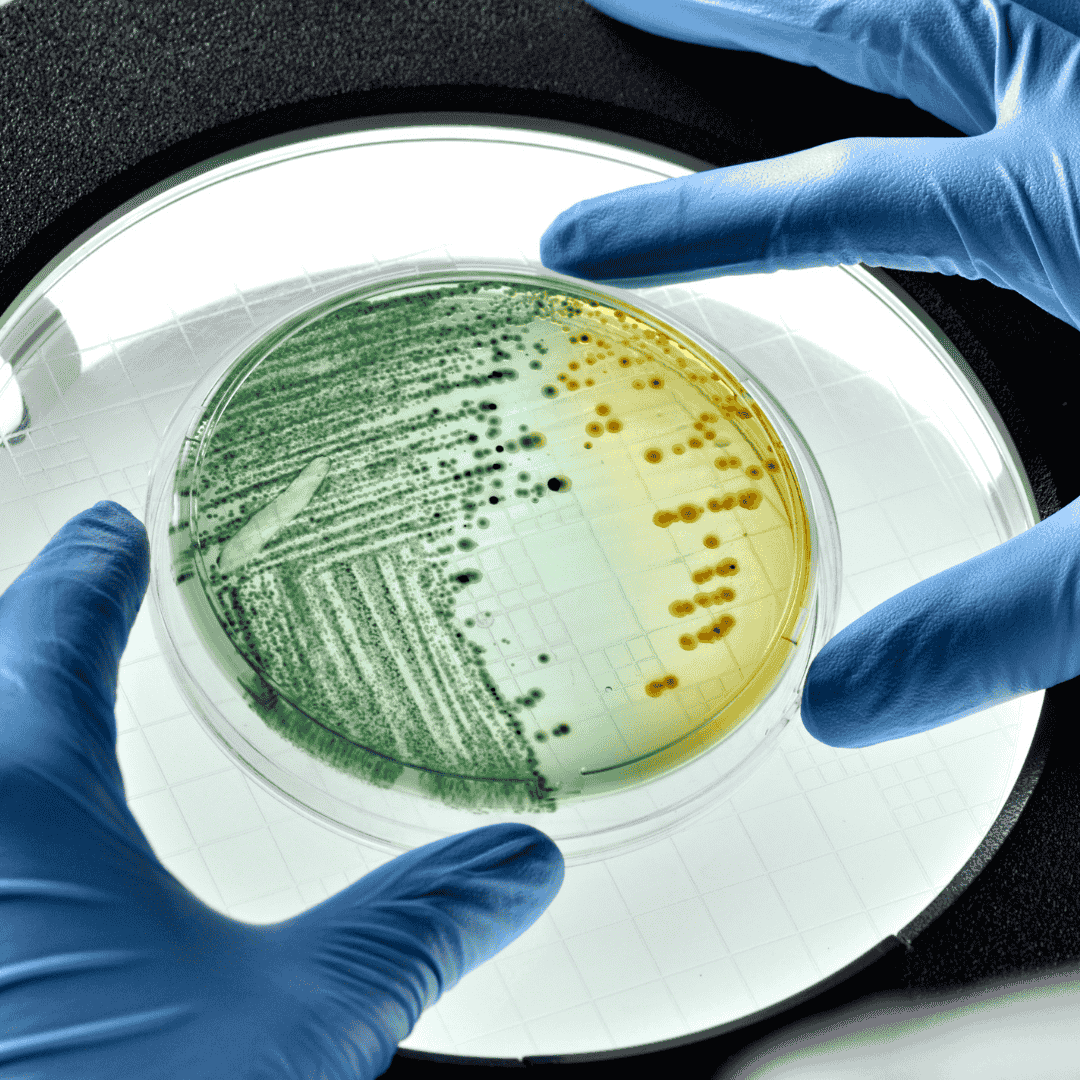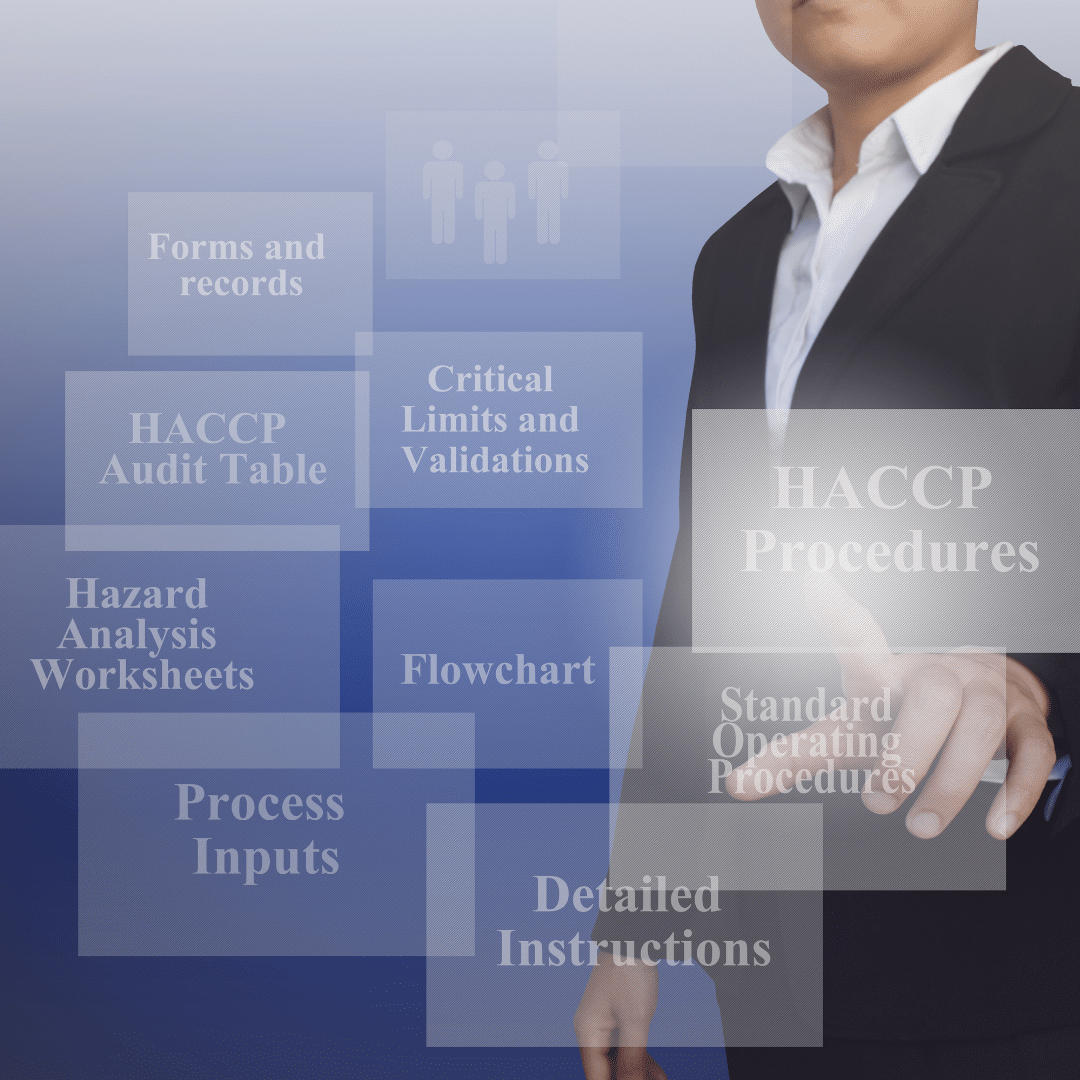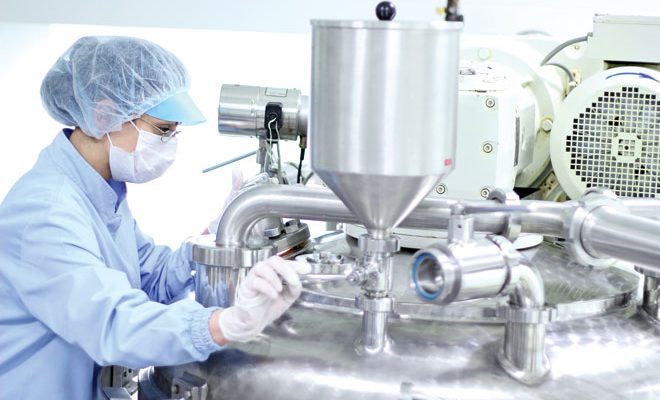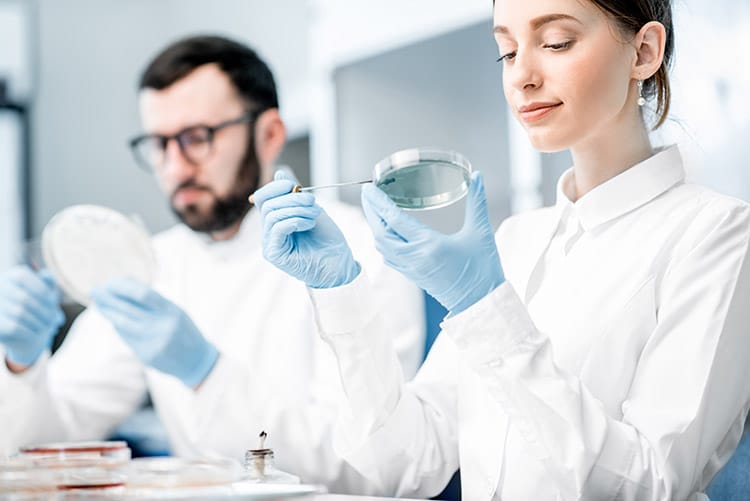What is Salmonella?
Salmonella is a Gram-negative bacterial species. It is a pathogenic organism that can cause infection in humans and other animals. It is a zoonotic pathogen that usually causes foodborne illness. This means it can be transmitted from animals to humans. Salmonella infections are usually associated with the consumption of contaminated food. This bacterium gets into food when hygiene rules are not followed in food processing plants and households. This leads to disease outbreaks.
There are many serotypes of Salmonella bacteria. All human pathogenic strains are classified in a single species, Salmonella enterica. In humans, Salmonella causes acute gastroenteritis, typhoid-paratyphoid, septicemia as well as local organ infections. The most common form of Salmonella is a gastroenteritis (diarrhea, abdominal pain, fever.) However, there are strains of Salmonella that can cause high fever, including typhoid fever (enteric fever). Typhoid fever is a clinical condition caused by the bacteria Salmonella typhi. The question “Does Salmonella kill?” becomes important here. Because Salmonella typhi is a life-threatening species and it is possible to spread to other organs. Cases that are usually referred to as food poisoning are actually Salmonella infections.

What are the Symptoms of Salmonella?
Salmonella symptoms are similar to those seen in other gastrointestinal infections. It causes a serious loss of fluid (dehydration). Symptoms are as follows:
- Fever
- Diarrhea (diarrhea)
- Loss of appetite
- Headache
- Cramping abdominal pain
- Tremor
- Nausea
- Vomiting
- Blood or mucus in the stool
- These symptoms may be similar to other diseases, which can make diagnosis difficult.
How is Salmonella Bacteria Transmitted?
Precautions to reduce the risk of Salmonella transmission are very important. Infection is usually caused by consuming raw or undercooked meat, poultry and eggs or egg products, or drinking unpasteurized milk. Among the serotypes, there are those that cause disease only in humans and animals. There are also species that can cause disease in both humans and animals. Salmonella typhi only causes disease in humans. Humans and animals are the main source of the bacteria and carriers are a potential source of infection. Salmonella can be transmitted and cause infection in various ways. In particular, contamination of water sources by sewage can easily transfer microorganisms into the food production and consumption chain. Chicken and pig farming may be primarily affected by this contamination. This may be the main source of Salmonellosis. Situations with a high risk of Salmonella infection include, for example, restaurants operating under inappropriate hygiene conditions and inadequate cooking of meat and egg products.
Salmonella infection is usually transmitted through feces, i.e. by the fecal-oral route. Food and water contaminated with the feces of patients or carriers play an important role in transmission. Cocoa cream, peanut butter, packaged meats and frozen foods are known to cause Salmonella outbreaks worldwide. Foods and environments contaminated with Salmonella include:
- raw eggs and shell eggs,
- raw poultry,
- red meat and seafood,
- vegetables
- fruits
- unpasteurized milk and dairy products (such as cheese),
- Sources: untreated water, animal contact, infected individuals, and contaminated surfaces, food handlers. Infection is a potential threat to all types of animals and the fur, scales, feathers or skin of infected animals can carry the bacteria.
The body has many natural defenses against Salmonella infection. For example, strong stomach acid can kill many Salmonella bacteria. But some medical problems or medicines can disrupt these natural defenses. For example, antacids can lower stomach acid, allowing more Salmonella bacteria to survive. Inflammatory bowel disease, recent antibiotic use increase susceptibility to Salmonella infection. Highest risk for Salmonella: 65+ adults, <1-year-old infants, weakened immune systems, sickle cell anemia patients.
Measures that can be taken to reduce the risk of salmonella transmission include:
- Cooking meat and egg products thoroughly.
- Observing hygienic food preparation and storage practices.
- Keeping raw and cooked foods separate and using separate counters for preparing raw foods.
- Washing hands frequently and washing hands before and after food preparation and after using the toilet.
- Avoid consuming unpasteurized milk and dairy products.
- Washing hands after contact with pets and regularly cleaning their food and water bowls.
- Wash and clean fresh fruits and vegetables thoroughly.
- Limiting contact with people who show signs of Salmonella infection and keeping them at home when they are sick.
These measures help reduce the risk of Salmonella infection and are important for maintaining a healthy life. However, in case of any health problems, it is important to contact a health professional.

FOOD HYGIENE REGULATION
General and specific hygiene requirements
The food business operator must comply with the following special hygiene rules when required by its activity.
a) To comply with the microbiological criteria established for foods.
b) Implement the procedures necessary to achieve the objectives of this Regulation.
c) Comply with the temperature control requirements for foods.
ç) Maintain and record the cold chain.
d) Taking samples and analyzing or having them analyzed.
The food business operator uses appropriate methods specified in the legislation as sampling and analysis methods or, in the absence of such methods, reference methods that are scientifically validated according to internationally recognized rules or protocols that provide results equivalent to the results obtained.
General hygiene rules for primary production and related activities
The food business operator responsible for primary production shall ensure that the primary products are protected against contamination as far as possible, taking into account that the primary products will be subjected to any subsequent processing.
The food business operator shall apply the provisions set out in the relevant legislation in relation to hazard control in primary production and related activities, including
a) taking measures to control contamination from air, water, soil, feed, fertilizer, veterinary medicinal products, plant protection products, biocides, storage, handling and waste.
b) Take measures relating to animal health, animal welfare and plant health that have an impact on human health, including programs for the control and monitoring of zoonoses as well as zoonotic agents.
The food business operator who raises, hunts, gathers or produces animal primary products shall take adequate measures to
a) all premises used in connection with primary production or related activities, including buildings used for the storage and handling of feed, are kept clean and, where necessary, cleaned and disinfected in an appropriate manner.
b) Equipment, containers, containers, vehicles, vessels and boats are kept clean and, where necessary, cleaned and disinfected in an appropriate manner.
c) Ensuring that animals going to the slaughterhouse and, where necessary, animals used in animal food production are cleaned in the best possible way.
ç) Using clean water where necessary to prevent contamination.
d) Ensuring that personnel in contact with food are healthy and are also trained on health risks.
e) Prevention of animals and pests that may cause contamination.
f) Storage and treatment of waste and hazardous substances in such a way as to prevent contamination.
g) Preventing the introduction and spread of infectious diseases transmitted to humans through food, including taking precautionary measures when new animals are introduced, and reporting suspected cases of such diseases to the Ministry.
ğ) Consideration of analysis results that are important for human health in samples taken from animals or other samples.
h) Feed additives and veterinary medicinal products must comply with the relevant legislation.
The food business operator producing or harvesting plant products shall take adequate measures to
a) Keeping equipment, containers, vessels, vehicles, ships, and boats clean. If necessary, disinfect them appropriately after cleaning.
b) Ensuring the cleanliness of plant products and hygienic production, transportation and storage conditions where necessary.
c) Using clean water when necessary to prevent contamination.
ç) Ensuring that personnel in contact with food are healthy and trained on health risks.
d) Prevention of animals and pests that may cause contamination.
e) Storage and handling of waste and harmful substances in a way that prevents contamination.
f) Analysis results are made on samples taken from plants or other samples. Of these, taking into account the results of analyzes that are important for human health.
g) Use of plant protection products and biocides as specified in the relevant legislation.
The food business operator responsible for primary production is obliged to implement corrective actions.
Tips for food hygiene in your company
- Make sure that your workers follow the cooking instructions correctly.
- Set up a monitoring system using IoT sensors to prevent missing steps.
- Keep raw food separate from cooked products to prevent cross-contamination of salmonella.
- Provide hygiene practices and sanitation procedures for new employees.
- Clearly document and demonstrate food handling procedures in operational areas.
- Freeze products immediately after food processing is complete.
- Fully sanitize the factory area at regular intervals.
- Use food safety software to track activity logs in case of recalls and monitor recalls.
People used to think that Salmonella only existed in poultry. After the Kinder Chocolate outbreak, Salmonella was limited by regulations to increase food safety standards. Safety managers and quality assurance managers should be aware of the latest legislation to avoid recalls of food products.
Did you get enough information about ‘How can we reduce the risk of salmonella contamination?’? qualiqo is here to help you. It answers your questions about sanitation and hygiene, Lab. & EMP, IPM and Pest Control. We also provide information about the main features and benefits of the software. We help you access the Qualiqo demo and even get a free trial.


